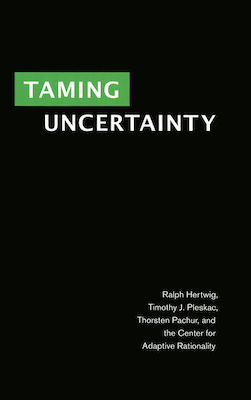Summary
How do people navigate uncertainty, continuously making near-effortless decisions under conditions of imperfect knowledge, high complexity, and time pressure? Taming Uncertainty argues that the human mind has developed three types of tools to grapple with different types of uncertainty: simple heuristics, tools for information search, and tools for harnessing the wisdom of others. This set of strategies for making predictions, inferences, and decisions constitute the mind's adaptive toolbox. The authors argue that the toolbox, its cognitive foundation, and the environment are in constant flux and subject to developmental change, and that each cognitive tool can be analyzed in terms of its ecological rationality—that is, the fit between specific tools and specific environments. Chapters deal with instances of decision making such as food choice architecture, intertemporal choice, financial uncertainty, pedestrian navigation, and adolescent behavior.
Hertwig, R., Pleskac, T. J., Pachur, T., & The Center for Adaptive Rationality (2019). Taming uncertainty. Cambridge, MA: MIT Press.

Interactive Elements
Online Supplementary Material
View and download the digital supplements for chapters 2 and 7 here.

